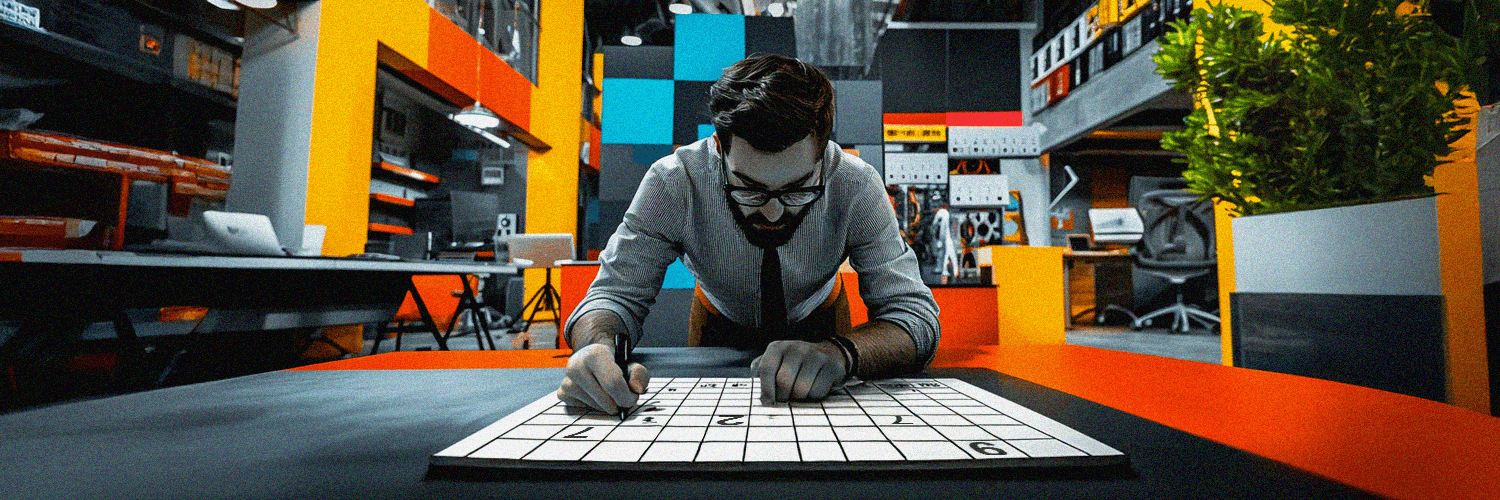You’ve laid the groundwork for growth: the team is in place, the strategy is set, and headcount projections are mapped out. But has your workspace kept up?
As companies grow, office environments need to do more than accommodate additional people – they need to support evolving work patterns, team dynamics, and operational complexity. Left unaddressed, friction in the workplace can undermine productivity and impact the employee experience.
We’re about to look at how rapid growth is putting pressure on office spaces, and what leading companies are doing to ensure their working environment is aligned with their growth plans.
TL;DR
- Growth quickly leads to friction in the workplace. Without planning, teams face overcrowding, scheduling chaos, and productivity dips.
- Smart growth requires smart tools. Scalable technology and real-time data are key to optimizing space.
- Treat your office like a strategic asset and align it with hiring, team needs and feedback.
4 Ways Rapid Growth Pressures Your Office Space
Scaling a business means scaling your space, too. Here’s how growth impacts your physical footprint, and what smart companies are doing to stay ahead.
When Growth Outpaces the Workspace
Let’s start with a scenario that plays out in high-growth companies everywhere.
A company starts the year with 120 employees, all working in the same office. With around 140 workstations – some permanent, some flexible – this seems manageable. Hybrid working is unofficial, but happening.
By the end of the year, the team has grown to 180 employees. And suddenly, the space, which was once dynamic, starts to feel dysfunctional. Here’s what broke down:
- A tight desk-to-headcount ratio became impractical when the number of employees working on-site on peak days skyrocketed.
- Employees arrived and found no available workstations, resorting to kitchen counters or simply leaving the office and heading out to a café.
- Meeting rooms were fully booked, with constant scheduling conflicts creating friction.
- Facilities did consider leasing more space, but weren’t sure whether they needed space or just better coordination.
They weren’t alone. According to recent data, 38% of companies plan to increase their office space in the next three years, up from 20% in 2023. But many are still approaching space planning reactively rather than strategically.
Companies may conclude that rapid growth reveals cracks in their workspace model. Proactive planning, supported by data and technology, helps ensure your office supports productivity rather than hinder it.

Global Growth, Local Complexity
Scaling across borders brings with it another kind of pressure: operational complexity.
One enterprise grew to nearly 9,000 employees in multiple countries. As their presence expanded, so did the inconsistencies. Regional offices had wildly different approaches to space, work styles and expectations. A setup that felt intuitive in Berlin didn’t translate in Bangkok. And although teams pursued the same goals, their needs were anything but uniform.
Without a clear framework, fragmentation takes over. It becomes more difficult to provide a consistent, equal experience for employees across all locations. Scheduling meetings across time zones is a challenge. Ensuring each site is equipped to support the way its teams work is another.
Sustainable global growth calls for a workspace strategy that is both flexible and location-aware – able to respect regional nuances while maintaining brand-wide cohesion.
Consolidation as a Growth Strategy
More employees does not always mean more offices. In fact, for some organizations, growth is the trigger for consolidation.
Picture this: one company moved from eight scattered offices to a single, centralized headquarters. Another moved from various coworking spaces into one purpose-built environment.
In both cases, the company transformed from a fragmented startup operation to a much more unified, scalable organization. The benefits of such changes are clear:
- Centralized IT and facilities management
- Reduced overhead and reduced complexity of lease agreements
- Shared amenities that improved the employee experience
But this also brought new challenges. Teams that had never shared space before now had to find their way around the office. Friction around booking systems, layout preferences and resource allocation became the norm.
Consolidation can drive operational efficiency, but it requires a well-thought-out spatial strategy to support diverse teams under one roof.
Basic Tools Collapse Under Growth
Many teams start small, managing desks through spreadsheets, Slack messages or shared calendars. That’s a workable solution when you’re 30 people. But when you’re 130, these systems break down.
One company’s facilities team found themselves constantly reacting: resolving double bookings, following up on no-shows, and hearing from employees who couldn’t find a seat even though half the desks were empty.
The problem wasn’t a lack of space. It was the lack of insight. Without real-time data on usage patterns, they couldn’t make informed decisions about capacity, layout or future demand.
And they’re not the exception: 33% of companies still rely on Excel as their main tool for workplace planning, even though it's neither scalable nor viewable in real time.
High-growth companies need more than just physical space. They need modern, intelligent workplace management platforms that provide the insights needed to scale with confidence.

Bringing Your Workspace in Line with Organizational Growth
Scaling a business isn’t just about growing headcount or revenue. It’s also about building the right infrastructure to support both. And your workplace strategy is an important part of that foundation.
These six tips should help you future-proof your space as your business evolves:
Set Up the Right Governance Early
Decisions in the workplace often fall through the cracks, not because they're unimportant, but because no one owns them.
To prevent this, you should set up a cross-functional Workplace Operations Team at the start of your growth. This group should bring together leaders from the following areas:
- People Ops / HR – to align with talent strategy and employee experience
- IT – to ensure tech infrastructure keeps pace with space requirements
- Real Estate / Facilities – to manage the physical space and supplier relationships
- Finance – to control costs and track ROI
Together, this team can manage space as a strategic asset rather than a reactive cost center and coordinate workplace decisions with hiring plans, technology needs and business growth.
Standardize Space Policies & Playbooks
When you are small, informal rules work. When you get bigger, they don’t. As your organization scales, formalize your workplace approach through shared policies and playbooks. These should cover:
- Desk and meeting room usage – booking rules, etiquette and visibility
- Hybrid work expectations – guidelines for remote and in-office working
- Requests for changes – how teams ask for layout updates or additional resources
Standardization makes for a smoother experience for employees – especially in fast-growing or multi-site environments – and makes growth across teams and locations manageable.
Rethink Space as a Dynamic Resource, Not a Static Asset
All too often, companies plan their space based solely on the number of employees. But it’s not just how many people you have, it’s also how they work.
Do they prefer remote, hybrid or office days? Does your engineering team need a space where they can retreat, while your sales team thrives in collaboration zones?
Creating workplace personas for different roles or departments will help you tailor your layout to actual behaviors and preferences. A study by Savills UK shows that 65% of employees believe their productivity would improve if their office environment reflected their preferred way of working.
A design that aligns with the way employees actually work boosts performance as well as satisfaction.
Forecast Space Demand Like You Forecast Revenue
Just as you model revenue growth, you also need to model space growth.
Using your headcount projections, create rolling workspace models at 3, 6, 12 and 18-month intervals. Assume what type of space you will need – not just how much. What will be most valuable?
Will the need for office space change as a result of your hybrid policy? Are new teams coming in that will require a different space layout or equipment? Can you flexibly adapt your existing real estate to meet these needs?
This type of forecasting reduces the risk of reactive decisions, such as over-investing in unused space for example.
Invest in Scalable, Integrated Workplace Technology
Managing workspaces with spreadsheets may work for a while, but a modern workplace management platform gives you the tools to run a dynamic, high-performing office. Look out for features like:
- Desk and room booking systems
- Hybrid scheduling tools
- Interactive floor plans (a must when you consider that employees spend an average of 27 minutes a week searching for meeting rooms and desks!)
- Employee wayfinding and visitor management
- Centralized resource management
These tools reduce day-to-day friction, especially as more people use the space in different ways or your workplace model evolves.
Choose Tools That Deliver Insights, Not Just Features
Not all platforms are created equal. Go beyond feature checklists and prioritize systems that give you the data you need to make smarter decisions:
- Real-time tracking of space utilization
- Historical trends to inform long-term planning
- Employee sentiment data to understand what’s working – and what’s not
Companies that invest in advanced analytics see a measurable impact. A recent McKinsey report found that organizations with mature data practices can increase their revenue growth by 54% and their competitive advantage by 44%.
The bottom line? Insights make you more agile. And agility ensures that your space strategy is aligned with business growth.

Use Data to Drive Smarter Space Decisions
Technology generates data, but it's how you use that data that matters most. The real power lies in transforming workplace data into strategic action, keeping your space one step ahead of business growth.
Make Workspace Utilization Visible
You can’t manage what you can’t see. Workplace analytics give you a clear picture of how your space is actually being used, not just how it was designed to be used.
These insights are key to avoiding mistakes, such as expanding too early or neglecting important areas. Track key metrics such as:
- Desk occupancy vs. availability
- Meeting room bookings and no-show rates
- Usage peaks by team, function or day
- Hybrid attendance trends
When you uncover these patterns, you can move from reactive guesswork to proactive decision-making. You’ll know when to change room layouts, add amenities or completely rethink your space mix altogether.
Translate Data into Actionable Planning
Usage data isn’t just for reporting, it’s your roadmap for growth. It should inform everything, from quarterly planning to long-term strategy. With the right insights, you can:
- Adjust the size of your location as your team grows or shrinks
- Repurpose unused space – why not turn an empty boardroom into high-demand focus pods or collaborative zones?
- Set up new offices based on team growth patterns
Test layout hypotheses before committing to a costly design overhaul
Data-driven decisions are not only smarter, but also faster and more cost-effective.
Build a Continuous Feedback Loop
Data shouldn’t be a one-off audit. It needs to feed an ongoing cycle of improvement. Here’s how to build that loop:
- Collect employee feedback regularly through short surveys, check-ins or sentiment tools
- Combine qualitative and quantitative data – usage stats only tell half the story
- Share insights across functions such as HR, Facilities and Finance
- Adapt policies, spaces and services based on the actual needs of employees
Don’t underestimate the employee voice. Research shows that only 34% of employees say they’ve been asked for their opinion on office design, highlighting a major disconnect between workspace decisions and employee expectations.
Combining hard data with human insight helps to close this gap.
How YAROOMS Supports Your Growth Journey
As your business grows, so does the complexity of managing people, space and resources. This is where YAROOMS comes into play. Designed to help fast-growing businesses stay agile, YAROOMS offers a complete workplace experience platform that simplifies space management, improves attendance visibility, and supports hybrid work models – all in one easy-to-use system.
Whether you’re expanding to new locations, rethinking your office layout or just optimizing occupancy, YAROOMS gives you the tools to act with confidence. From advanced room and desk booking to real-time workplace analytics, it empowers you to design spaces that truly support your people now and in the future.
A Growth Strategy Isn’t Complete Without a Workspace Strategy
Companies invest heavily in scaling talent, technology and operations, but the environment in which the work takes place is often overlooked. That’s a costly blind spot.
When businesses grow, meeting rooms are often fully booked.
Desks disappear.
Employees waste time looking for space.
Productivity suffers as a result.
Don’t wait until you feel the strain. Plan for growth by designing workspaces – physical and digital – that scale with your ambitions, support the way people work and are flexible enough to adapt to the needs of tomorrow.
Because growth isn’t just about having more space. It’s about having the right space: dynamic, efficient, data-driven and tailored to the people who use it.











